Abstract
Background: Isoberlinia (Craib and Stapf) is a genus with high economic and pharmacological values.
Aim: This study aimed at establishing the morphological, anatomical and molecular characterisation of the leaves of I. doka and I. tomentosa, which were conducted for proper authentication.
Setting: The leaves of I. doka and I. tomentosa were obtained from Shika, kaduna State, Nigeria.
Method: Morphological and anatomical characters were determined according to standard procedures, while molecular identifications were performed using ribulose-1,5-bisphosphate carboxylase (rbcl) gene and internal transcribed spacer (ITS) DNA barcode’s region.
Result: Morphological studies revealed similar features for both species except for the shiny leaves of I. doka and rough abaxial surfaces of I. tomentosa because of the presence of trichomes. Variations were observed in their epidermal features, stomatal index, stomata frequency, presence or absence of trichomes, trichomes frequency and their quantitative anatomical features. The quantity and quality of DNA measured at A260/280 ratio using nanodrop spectrophotometer were 29.1 ng/μL and 1.74 ng/μL for I. doka, respectively, while the I. tomentosa concentration and purity were 71.1 ng/μL and 1.85 ng/μL, respectively. Agarose gel electrophoresis revealed two DNA bands with 700 bp (rbcl) and 600 bp (ITS). The sequence analysis revealed maximum identity with National Centre for Biotechnology Information (NCBI) GeneBank Isoberlinia species. Evolutionary analysis supported the monophyletic origin of the genus Isoberlinia. The morphological and anatomical characters of I. doka and I. tomentosa leaves have provided a significant taxonomy tool for proper authentication of this plant.
Conclusion: The findings ascertained that ITS and rbcl served as an improved and efficient tool for species identification of these studied species and could serve as potential DNA barcodes for these taxa.
Contribution: This article suggests that further studies the on screening of these plants, for various pharmacological potentials, might be useful for new drug development.
Keywords: DNA barcoding; morphological; GeneBank; polymerase chain reaction; Isoberlinia; anatomical.
Introduction
Isoberlinia Craib and Stapf ex Holland genus in the family Fabaceae (legume family) is a tree native to the hotter parts of tropical Africa (Burkill 1995). The species are significant components of Miombo woodlands and Northern Nigeria guinea Savanah woodlands (Bello & Musa 2016). Isoberlinia is a vigorously colonising African tree that often dominates the woodland belt that stretches from Guinea in the west to Uganda in the east.
There are five accepted species of Isoberlinia, namely I. angolensis, I. doka, I. paradoxa, I. scheffleri and I. tomentosa (Burkill 1995). However, the northern Nigeria guinea savanna are dominated with an open woodland of two species, the I. doka and I. tomentosa (Bello & Musa 2016; Jackson 1970).
Isoberlinia doka is locally called ‘doka’, while I. tomentosa is called ‘faradoka’ in Hausa. Naturally, these two plants exist as trees or shrubs measuring between 10 m and 20 m tall, with a trunk of about 40 cm – 50 cm diameter, branching from about 5 m upwards. The leaflets are arranged in three or four pairs. The flowers are small and white, forming large open inflorescences that are held conspicuously above the leafy crown (Burkill 1995). The pods are oblong, flat and quite large, about 30 cm long and 10 cm wide. According to Singab and Mostafa (2016), the molecular study of medicinal plants is a promising and prospective scope in the field of pharmacognosy. Deoxyribonucleic acid (DNA) barcoding using ribulose-1,5-bisphosphate carboxylase (rbcl) and ITS genes are an important tool for species identification and standardisation of specific region of the plant genome (Singab & Mostafa 2016; Zabta, Shinwari & Nadia 2014). The molecular approach for the identification of plant species seems to be very effective than morphological markers as it allows direct access to the genome and makes it possible to understand the relationship between individuals (Tripathi et al. 2013). However, DNA markers are based on unique nucleotide sequences and are not affected by environmental factors or physiological conditions (Kim et al. 2016). The leaf epidermal is the most varied organ in providing anatomical features that can be employed as useful taxonomic characters for proper classification, delineation and identification of plant (Aworinde et al. 2009). Leaves can have a wide range of morphological and anatomical studies such as the leaf epidermal studies, stomatal and trichome are considered important in phylogeny and taxonomy (Hameed 2012).
Isoberlinia doka and I. tomentosa are widely overexploited for fuel wood in northern Nigeria, and this makes the plant to exist in their shruby state (Bello & Musa 2016). They are widely used in traditional medicine for the treatment of various kinds of diseases, such as ulcer, stomach pain and arrow poison (Abdulkadir et al. 2011) without much scientific validation in accordance with World Health Organisation standard. Pharmacological activities, such as antioxidant, antibacterial, antifertility, and brine shrimp lethality test have been reported for I. doka (Abdu et al. 2016; Abdulkadir et al. 2011; Salka, Abubakar & Hassan 2011).
A systematic standardisation, including morphological, anatomical and molecular studies, that could help in proper identification, prevention of adulteration and quality control of drugs are lacking for I. doka and I. tomentosa species.
Materials and methods
Plant collection and authentication
The fresh plants of I. doka and I. tomentosa were collected from the man-made forest at Shika Isoberlinia woodland, Giwa local government area, Kaduna State. The plants were authenticated by a taxonomist with Voucher specimen numbers ABU 022478 and ABU 016280 deposited as for I. doka and I. tomentosa, respectively, at the Herbarium, Department of Botany, Ahmadu Bello University, Zaria, Nigeria.
The morphological and anatomical features of Isoberlinia doka and Isoberlinia tomentosa
Morphological and anatomical examinations on the fresh I. doka and I. tomentosa were conducted to assess their anatomical features (Evans 2009; WHO 2011). Macroscopic identity of medicinal plant materials was based on shape, size, colour, surface characteristics, texture, fracture characteristics, odour, and taste of fresh and powdered stem bark. The macroscopic characters of the samples were carried out based on the method described by WHO (2011).
Stomatal number and stomatal index
The Adaxial and abaxial epidermal peels of I. doka and I. tomentosa leaves were rinsed in distilled water severally, cleared with sodium hypochlorite and mounted on a glass slide with few drops of glycerol covered with cover slip and examined under a light microscope (Hund Wetzlar H600/12, Germany). The number of epidermal cells and stomata was counted. Stomatal index (SI) was calculated using the formula:
SI = [S \ (S+E)] × 100, where S = No. of stomata in an area of 625 μm2 & E = No. of epidermal cells. The experiment was repeated 10 times. Average values were determined, and the results were expressed per square millimeter. (Evans 2009)
Vein-islet and vein termination numbers
Small pieces from the leaves were taken midway from margin to midrib and cleared by boiling in a super saturated choral hydrate solution in a test tube placed in a boiling water bath. Vein islet and vein termination were counted using 10 × 10 magnification. Ten readings from continuous squares were taken for counting the vein islets and vein termination (Evans 2009).
Palisade ratio
The average number of palisade cells present beneath each upper epidermal cell is called palisade cell ratio. Leaf pieces of the two plants were cleared on boiling with chloral hydrate solution. These were viewed under a microscope with 10 × 10 magnifications. Palisade layers were determine under four epidermal cells and the focus were changed until the palisade cells were seen within the epidermal cells. Palisade cells including those, which are more than half covered by the epidermal cells, were counted. Palisade ratio of a group was obtained by dividing the resulted value by 4 (Evans 2009).
Transverse section of the fresh parts Isoberlinia doka and Isoberlinia tomentosa
Transverse section of the fresh parts of I. doka and I. tomentosa were cut using surgical blades. The sections were cleared in 10% sodium hypochlorite solution, washed in distilled water, and then stained in safranin and fast green. Sections were then mounted between the slide and coverslip using dilute glycerol, and photomicrographs of the slides were obtained.
Isolation of DNA regions of Isoberlinia doka and Isoberlinia tomentosa
Genomic DNA were extracted from fresh young leaves of I. doka and I. tomentosa using a protocol of Zymo quick DNA universal kit.
Determination of the quantity and quality of genomic DNA extracted from Isoberlinia doka and Isoberlinia tomentosa
The quality and quantity of the genomic DNA extracted from the two plants were determine using Thermo scientific NanoDrop 2000 spectrophotometer, measured at the absorbance ratio of 260 by 280 nm.
Polymerase chain reaction of the DNA extracted from Isoberlinia doka and Isoberlinia tomentosa
Polymerase chain reactions were performed on the DNA isolated from the two plants according to Prasath, Mohan and Divya (2017). The primers ITS1 (5′CCGTAGGTGAACCTTGCGG 3′) and ITS4 (5′TCCTCCGCTTATTGATATGC 3′) and rbcl gene with forwarding sequence rbcLaF 5′-ATG TCA CCA CAA ACA GAG ACT AAA GC-3′ and reverse sequence is rbcLaR 5′-GTA AAA TCA AGT CCA CCR CG-3′ were used in Eppendorf Personnel Master Cycler (Germany). The polymerase chain reaction (PCR) total volume of the reaction was 20 μL, which include H2O (16.0 μL), DNA (2.0 μL) and ITS primers 2.0 μmol/L, and the same reaction was carried out using rbcl primers. The conditions for both ITS and rbcl gene are indicated in Table 1.
| TABLE 1: Polymerase chain reaction conditions for internal transcribed spacer and ribulose-1,5-bisphosphate carboxylase gene Isoberlinia doka and Isoberlinia tomentosa. |
Gel electrophoresis of polymerase chain reaction products obtained from Isoberlinia doka and Isoberlinia tomentosa
The PCR products obtained from the two plants were assessed on a 0.8% agarose gel (in Tris-acetate EDTA buffer) electrophoresis at 100 volts with a 100-bp DNA ladder. The DNA was stained with ethidium bromide visualised on a UV transilluminator. The PCR products were subjected to sequencing by Sanger method in an AB Sequencer.
Nucleotide alignment and phylogenetic analysis
The ITS-rDNA and rbcl region nucleotide sequences of the two plants were performed at the NCBI gene blast. Searches were performed using the BLAST megablast parameter search function, to compare the study sequences with the data from the Genebank (http://blast.ncbi.nlm.nih.gov/Blast.cgi). Sequences were submitted to the GeneBank by Banklt direct submission, and their accession numbers were generated.
The sequences obtained from the two study plants, and some selected GeneBank sequences were aligned using the multiple alignment Clustal W algorithm (Thompson et al. 1997). The phylogenetic analysis based on the rDNA-ITS and rbcl sequences were constructed by the maximum likelihood bootstrap analysis. A total of 1000 bootstrap replicates were performed using MEGA version 6.06 (Kim et al. 2016; Tamura et al. 2013) software.
Results and discussions
Macroscopicals studies of Isoberlinia doka and Isoberlinia tomentosa leaves
The macroscopic studies of I. doka and I. tomentosa leaves exhibited similar features in their dried state as indicated in Table 2, including rough powdered leaves, the organoleptic characters were also similar for I. doka and I. tomentosa, which are tasteless with characteristic odour and light green. This study further showed that the plant samples change colour after drying, which is similiar to the findings of Ahmed et al. (2014) that moisture loss could affect organoleptic characters. The only notable macroscopical differences between the two plants samples were seen in their fresh conditions as I. doka had smooth shiny leaves at adaxial surface as a result of thick cuticular layer and I. tomentosa abaxial leaves surface was rough because of non-glandural trichomes as showed in Table 3. This supports the earlier report of Neinhuis and Barthlott (1997) that trichomes is one of the features that caused roughness in epidermal surfaces of water-repellent plants.
| TABLE 2: Macroscopical studies of fresh and powdered leaves of I. doka and I. tomentosa. |
| TABLE 3: Qualitative, morphological and anatomical features of I. doka and I. tomentosa leaves. |
Qualitative morphological and anatomical characters of Isoberlinia doka and Isoberlinia tomentosa leaves
The qualitative, morphological and anatomical characters of I. doka and I. tomentosa, as shown in Table 3, exhibited similar lamina and epidermal features. The lamina features included ovate shaped, pinnately veined, acuminate apex, entire margin and acute base. Paracytic types of stomata were observed on both epidermal surfaces of the two plants. The main diagnostic taxonomical features to differentiate the two plants were revealed in the presence of trichomes in the abaxial surfaces and additional polygonal types of epidermal cells of I. tomentosa, whereas trichomes and polygonal epidermal cells were absent in I. doka as shown in Table 3.
Quantitative morphological and anatomical characters of Isoberlinia doka and Isoberlinia tomentosa leaves
The quantitative, morphological and anatomical characters, as listed in Table 4, showed more variable features amongst I. doka and I. tomentosa. The petiole length ranges from 0.9 cm to 0.96 cm for the two study species. The lamina length of I. tomentosa (16.5 ± 0.12 cm) was larger than I. doka. High epidermal cell numbers were observed at the adaxial surfaces of both studied species but their stomata number were found to be higher at the lower epidermis than the upper surfaces. Amphistomata nature exhibited by these plants serve as an adaptative features to help withstand harsh environmental conditions. This finding was different from the report of Abubakar et al. (2018), which revealed a higher stomata number at upper epidermal surfaces of Cassia and Senna studied species. The study had shown that the types, abundance and nature of stomata distributions in plants are essential for unique physiological responds to changes in the environment (Aguoru, Ahemen & Olasan 2015). The leaf surface constants varied between the two species. However, stomatal index (0.23), vein islets (40.6 ± 0.87 mm2) and vein termination number (35.6 ± 3.36 mm2) of I. tomentosa were higher than the values obtained for I. doka, as shown in Table 4 and Figure 1. Quantitative measurement of transverse section (TS) across the midrib of leave (Table 4) revealed more variable taxonomical features of I. doka and I. tomentosa, in contrast with Hohn (1999) that Isoberlinia types are weakly delimited, even though they possessed similiar qualitative features.
| TABLE 4: Quantitative studies of I. doka and I. tomentosa leaves and stembark. |
 |
FIGURE 1: Epidermal leaf microscopy of Isoberlinia doka and Isoberlinia tomentosa. (a). Calcium oxalates crystals of I. tomentosa, mag ×400. (b) Vein islets (vi), vt: vein termination of I. tomentosa mag x100. (c). Vein islets (vi), vt: vein termination I. doka mag x100. (d). Trichomes of I. tomentosa mag x100. (e). Adaxial epidermis I. tomentosa of mag x400. (f). Abaxial epidermis I. tomentosa mag x400. (g). Stomata of I. doka at adaxial epidermis mag x400. (h). Stomata of I. doka at abaxial epidermis mag x400. |
|
The transverse section of the leaves of Isoberlinia doka and Isoberlinia tomentosa
The TS of the leaves of I. doka and I. tomentosa is dorsoventral in nature. The palisade parenchyma cells of both species appeared in double layers, while the spongy mesophyll cells varied between the two plants. The spongy mesophyll cells of I. doka were between 4 and 6 layered, while that of I. tomentosa ranged between 6 and 10 layered. The vascular tissue system of both species were well defined with prominent bundle sheath. There were double vascular bundle distributions in both plants, one of the vascular bundle was concentric, amphivasal (phloem towards the inner and xylem at the pheriphery) and the other appeared concave with similar tissue distributions. Trichomes were absent in I. doka, while non-glandular trichomes were present at the lower epidermal region of I. tomentosa as shown in Figure 2 and Figure 3.
 |
FIGURE 2: Transverse section of Isoberlinia doka with magnification × 40. |
|
 |
FIGURE 3: Transverse section of Isoberlinia tomentosa with enlarge palisade parenchyma cells and a whole section. Magnification × 10. |
|
Molecular characterisation of Isoberlinia doka and Isoberlinia tomentosa
Total genomic DNA were isolated from the collected I. doka and I. tomentosa fresh leaves and there concentration and purity using nanodrop spectrophotometer were 29.1 ng/uL and 1.74 ng/uL for I. doka, respectively, while I. tomentosa concentration and purity were 71.1 ng/uL and 1.85 ng/uL, respectively, as shown in Table 5.
| TABLE 5: Quality and quantity of DNA sample from Isoberlinia doka and Isoberlinia tomentosa. |
Amplicons obtained after PCR were of 700 bp and 600 bp for rbcl and ITS, respectively, and visualised on a 0.8% agarose gel as shown in Figure 4 and Figure 5).
 |
FIGURE 4: Agarose gel electrophoresis of ribulose-1,5-bisphosphate carboxylase gene of I. doka and I. tomentosa. |
|
 |
FIGURE 5: Agarose gel electrophoresis of internal transcribed spacer gene of Isoberlinia doka and Isoberlinia tomentosa. |
|
Phylogenetic analysis of Isoberlinia doka and Isoberlinia
The phylogenetic tree consisted of two main groups ITS and rbcl. The first ITS group consist of two clusters, the first cluster had four series of two cluster with 91%, 98%, 71% and 69% DNA of a genetic similiarities with the following species and their accession numbers : MG949328.1 I. schefferi, AF513691.1 I. doka, KX057884.1. I. doka, KX057885.1 I. tomentosa, in NCBI Blast.
The second cluster had two series with 99% and 100% genetic similiarities with HM041839 Berlinia orientalis, KY306506 Berlinia confusa and AF513669 Berlinia confuse with GeneBank NCBI Blast.
The second group rbcl consists of two cluster, the first cluster shared 67% similiarities between KX119305 I. doka, KX119306 I. tomentosa and ID rbcl, IT rbcl (study species), respectively. The second cluster shared 88% DNA similiarities with three Tamarindus indica AB378732, AB378731, AB378730, as showed in (Figure 6) and sequences were submitted to NCBI GeneBank using Banklt direct submission. The accession number generated for rbcl gene for I. tomentosa was MN 879280 and I. doka (MN885536). The accession number for ITS rDNA generated for I. tomentosa and I. doka were MN857896 and MN857895, respectively.
 |
FIGURE 6: Phylogenetic tree of Isoberlinia tomentosa and Isoberlinia doka. |
|
The ITS and rbcl DNA barcoding marker revealed considerable genetic similarities and identification among the two studied species, which strongly agrees with the morphological similarities observed in this study. A similar report was revealed by Zabta et al. (2014 that the rbcl region was more effective to identify and discriminate the species of Acacia and Abizia. DNA barcoding could be considered as a good approach for distinguishing and identifying the mint plants (Hameed 2018).
The subfamily detarioideae are depicted by clustering of distinct species within its clade similar to the findings of Oshingboye (2017) that the relationship among the cesalpinoideae also depicted distinct clusters in their tribes. Phylogenetic analysis of this study presents a monophyletic origin of the genus Isoberlinia.
The percentage BLAST identity of the sequences obtained for rbcl and ITS gene from the two studied plants when compared with the Isoberlinia species at NCBI GeneBank was above 99% to I. doka and I. tomentosa (Table 6).
| TABLE 6: Percentage BLAST identity of Isoberlinia doka and Isoberlinia tomentosa with the GeneBank sequence data. |
Conclusion
The macroscopic studies of I. doka and I. tomentosa showed similar features in their fresh leaves with smooth surface characteristics, hard and fibrous fracture, grey in colour, tasteless and characteristics odour. The qualitative, morphological and anatomical characters of I. doka and I. tomentosa leaves revealed similar lamina features, such as ovate shaped, pinnately veined, acuminate apex, entired margin and acute base. The presence of trichomes in the abaxial surfaces and additional polygonal types of epidermal cells of I. tomentosa can serve as a diagnostic tool for proper authentication of this plant. The blast percentage identity of the sequences obtained for the two plants revealed above 99% similarities with the same species in the GeneBank. This finding also ascertained that ITS and rbcl are an efficient tool for species identification of these medicinal plants. Further studies on screening, these plants for various pharmacological potentials might be useful for new drug development.
Acknowledgements
The authors are thankful to Ramla at DNA lab kaduna state, Nigeria for assisting in the molecular analysis.
Competing interests
The authors declare that they have no conflict of interests.
Authors’ contributions
H.B. wrote the first draft of the manuscript; carried out the research, and A.U.K., A.A.A. and B.Y.A. supervised the work and made all the necessary contribution towards the success of the work. All authors read and approved the final manuscript submission.
Ethical considerations
This study followed all ethical standards for research without direct contact with human or animal subjects.
Funding information
This research work received no specific grant from any funding agency in the public, commercial or not-for-profit sectors.
Data availability
The accession number generated were submitted at the NCBI GeneBank.
Disclaimer
The views and opinions expressed in this article are those of the authors and do not necessarily reflect the official policy or position of any affiliated agency of the authors.
References
Abdu, Z., Dimas, K., Sunday, A.O., Isyaka, M.S. & Sa’id, J., 2016, ‘Qualitative investigation of phytochemicals and brine shrimp lethality test of the root, stem bark and leaves extract of Isoberlinia doka (Fabaceae)’, International Journal of Chemical Studies 4(1), 112–116.
Abdulkadir, I.E., Aliyu, A.B., Ibrahim, M.A., Audu, S.B.D. & Oyewale, A.O., 2011, ‘Antioxidant activity and mineral elements profiles of Isoberlinia doka leaves from Nigeria’, Australian Journal of Basic and Applied Sciences 5(12), 2507–2512.
Abubakar, B.Y., Adamu, A.K., Ambi, A.A. & Nuru, F.G., 2018, ‘Taxonomic delimitation of species of Senna and Cassia in Ahmadu Bello University, Zaria’, Fuw Trends in Science & Technology Journal 3(2), 488–495.
Aguoru, C., Ahemen, A. & Olasan, J., 2015, ‘Comparative micromorphological studies on two Landolphia species in North Central Nigeria’, Journal of Emerging Trends in Engineering and Applied Sciences 6(3), 152.
Ahmed, M., Abas, F., Tan, C.P. & Khatib, A., 2014, ‘Effects of different drying methods and storage time on free radical scavenging activity and total phenolic content of Cosmos caudatus’, Antioxidants 3(2), 358–370. https://doi.org/10.3390/antiox3020358
Aworinde, D.O., Nwoye, D.U., Jayeola, A.A., Olagoke, A.O. & Ogundele, A.A., 2009, ‘Taxonomic significance of foliar Epidermis in some members of Euphorbiaceae family in Nigeria’, Research Journal of Botany 4(1), 17–28. https://doi.org/10.3923/rjb.2009.17.28
Bello, H. & Musa, A.O., 2016, ‘Species composition and structure of Isoberlinia woodland of Shika, Zaria Nigeria’, Journal of Agriculture and Ecology Research International 5, 1–9. https://doi.org/10.9734/JAERI/2016/20494
Burkill, H.M., 1995, The useful plants of West Tropical Africa, Volume 3, Families, J-L, Royal Botanic Gardens, Kew.
Evans, W.C., 2009, Trease and Evans’ pharmacognosy e-book, 16th edn., pp. 513–517, Saunders WB, Elsevier Health Sciences, Edinburgh.
Hameed, I., 2012, ‘Pharmacognostic study of five medicinal plants of family Solanaceae from District Peshawar’, Pakistan thesis submitted to Department of Botany, University of Peshawar, pp. 2–3.
Hameed, S.M., 2018, ‘Molecular identification of Lavendula Dentata L., Menthalongifolia (L.) Huds. and Mentha × Piperita L. by Dna barcodes’, Bangladesh Journal of Plant Taxonomy 25(2), 149–157. https://doi.org/10.3329/bjpt.v25i2.39519
Hohn, A., 1999, ‘Wood anatomy of selected West African species of Caesalpinioideae and Mimosoideae (Leguminosae): A comparative study’, Iawa Journal 20(2), 115–146. https://doi.org/10.1163/22941932-90000672
Jackson, G., 1970, ‘Vegetation around the city and nearby villages of Zaria’, in M.J. Mortimore (ed.), Zaria and its region occasional paper no. 4, 14th Annual conference of the Nigeria Geographical Association, Zaria, p. 171.
Kim, W.J., Ji, Y., Choi, G., Kang, Y.M., Yang, S. & Moon, B.C., 2016, ‘Molecular identification and phylogenetic analysis of important medicinal plant species in genus Paeonia based on rDNA-ITS, matK, and rbcL DNA barcode sequences’, Genetics and Molecular Research 15(3), gmr. 15038472. https://doi.org/10.4238/gmr.15038472
Neinhuis, C. & Barthlott, W., 1997, ‘Characterization and distribution of water-repellent, self-cleaning plant surfaces’, Annals of Botany 79(6), 667–677. https://doi.org/10.1006/anbo.1997.0400
Oshingboye, A.D., 2017, ‘Molecular characterization and DNA barcoding of arid-land species of family Fabaceae in Nigeria’, Submitted to the School of Postgraduate Studies, University of Lagos, pp. 1–42.
Prasath, H., Mohan, C. & Divya, S., 2017, ‘Molecular characterization of medicinal plant –Cassia Fistula L by Matk Gene’, International Journal for Research in Applied Science and Technology 5(4), 126–132.
Salka, N.M., Abubakar, A.A. & Hassan, F.B., 2011, ‘Sociability and sexual motivation in male wistar rats in response to different doses of extract of Isoberlinia doka using “partition” test method’, Asian Journal of Plant Science and Research 1(1), 88–94.
Singab, A.N. & Mostafa, N.M., 2016, ‘Molecular pharmacognosy: A promising and prospective scope in the field’, Medicinal and Aromatic Plants 5, e172. https://doi.org/10.4172/2167-0412.1000e172
Tamura, K., Stecher, G., Peterson D., Filipski, A.D. & Kumar, S., 2013, ‘MEGA6: Molecular evolutionary genetics analysis version 6.0’, Molecular Biology and Evolution 30(12), 2725–2729. https://doi.org/10.1093/molbev/mst197
Thompson, J.D., Gibson, T.J., Plewniak, F., Jeanmougin, F. & Higgins, D.G., 1997, ‘The clustal X windows interface: Flexible strategies for multiple sequence alignment aided by quality analysis tools’, Nucleic Acids Research 25(24), 4876–4882. https://doi.org/10.1093/nar/25.24.4876
Tripathi, A.M., Tyagi, A., Kumar, A., Singh, A., Singh, S., Chaudhary, L.B. et al., 2013, ‘The internal transcribed spacer (ITS) region and trnH-psbA [corrected] are suitable candidate loci for DNA barcoding of tropical tree species of India’, PLoS One 9(8), e57934. https://doi.org/10.1371/journal.pone.0057934
WHO, 2011, Quality control methods for medicinal plant materials, World Health Organization, Geneva.
Zabta, K., Shinwari, K.J. & Nadia, B.Z., 2014, ‘Molecular systematics of selected genera of subfamily Mimosoideae-Fabaceae’, Pakistan Journal of Botany 46(2), 591–598.
|